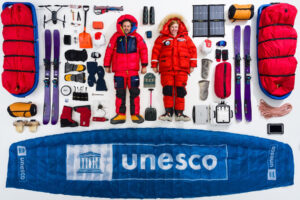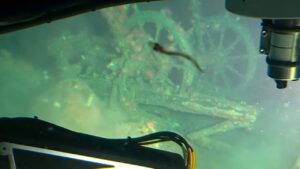The 2016 season on the North Pole has been flamboyant: fellow explorers of all sizes, shapes and ages, Chechen «flying warriors», and even the «polar spies». But there was one other thing, which in glamour of bigger and louder events stayed almost unnoticed: the Arctic Arts micro-exhibition featuring miniature works of elderly craftsmen living in the most isolated and hard-to-reach settlements of the Arctic.
Opening the Arctic Arts mobile exhibition organized in partnership with Arctic Without Borders and Expedition Avannaa , Ole Jorgen Hammeken, the Inuit elder, actor and explorer, said: “Some people are just doubtful: “Ikkuppisiummi?” Have you really planted it on the Big Navel= Qalasersuaq = the North Pole?” And yes, we did. But this is really not what our story is about. Our story is about something else.
This particular Erfalasorput – the Flag of Greenland – has travelled all the way from Qaanaaq, Greenland, to Chukotka and Death Valley, from Africa to Central Asia, from Siberia to Monaco, and now finally to the North Pole. The story of its journey is a story of love and compassion, about sharing and making things together.
In Cultural Expedition Avannaa and in Arctic Without Borders we are building bridges, every day – between the smallest places – the most distant places, bring people together and melt ice walls that otherwise would have separated them.
For so many years our voices stayed unheard in the big capitals where crucial decisions regarding our land and sea resources and our ways of life were made. We believe that today, in order to bring hope and change to our struggling settlements, to confront suicide, poverty and despair, we need to join our forces through collaboration and knowledge exchange in circumpolar communities.
The miniature works made by the Arctic Arts artists have arrived to the North Pole to remind everyone that our ancestors from the First Nations are the Arctic’s first and utmost explorers.”





